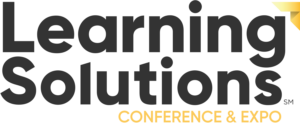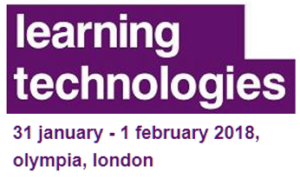Each week that I am able to participate in #lrnchat discussion I post a summary of the discussion to my blog. I do this both for my personal development as well as sharing with the Learning and Development Profession at large. This summary is based on my own interpretations of the chat; others who participated may have differing opinions or interpretations of the discussion. I welcome those that do to add your ideas to the comments.
The topic of this week’s #lrnchat session was Aligning and Evaluating Effective, Efficient, and Engaging Learning.
I find looking at the questions that are used to loosely guide the chat as a nice way to see the overall theme of the chat. Here are the five discussion questions that were presented to the group:
Q1) How do you ensure your learning solutions are *aligned* with organizational objectives?
Q2) How do you ensure your learning solutions are *effective*?
Q3) How do you ensure your learning solutions are *efficient*?
Q4) How do you ensure your learning solutions are *engaging*?
Q5) How do you *evalute* your learning solutions?
Key Learning Points
The discussion started with a focus on alignment. It’s critical that any learning and performance solution be aligned with the overall objectives of the organization. The question is, how can we ensure that this happens?
It starts with something that seems obvious, but is often missing; L&D professionals need to be aware of what the organizational objectives are. Often L&D projects start with a problem that needs to be solved. These needs often come from a specific business unit, who may be requesting something that, in itself, is not aligned with organizational objectives. It is up to the L&D professional to ensure that all solutions have a direct line of sight to organizational objectives.
How do we do that? By consistently keeping the lines of communication open with Senior Leaders. It’s also important to realize that successful organizations transform organizational objectives from something employees ‘know’ to something that they ‘live’ and ‘do’.
From there the discussion moved towards ensuring solutions are effective. There was a similar theme here, as in order for a solution to be effective, it is critical that a thorough analysis be done beforehand and that the design be linked to organizational goals. The only true measure of effectiveness for a solution is whether or not the organizational goal measurement improved.
Next up in the discussion was how we can ensure our solutions are efficient. A common theme here was the need to ‘cut the fat’ in design. Much of the content in a solution is ‘nice to know’ instead of ‘need to know’. If efficiency is a concern – and it often is in today’s economy – we need to cut some of the ‘niceties’ and place focus on the key performance factors participants need to improve upon.
The brought the conversation towards ensuring solutions are engaging. There were two major themes related to engaging learners. The first was about control, specifically the need to turn it over to the learners. We need to create solutions in which learners can explore, discover, and practice skills that are transferable to the real-work environment.
Another theme towards engagement centered on making the solution ‘fun’. I’ve never really embraced the idea of making learning ‘fun’, because I more often see the implementation of ‘fun’ as being a distraction. Fun in a performance solution can be great. However, it must be relevant fun. Fun on it’s own is just that: fun. Fun that is relevant to the performance goal is powerful and engaging.
The discussion ended on the topic of how solutions are evaluated. The topic stayed on a more holistic level of evaluation, without getting into the often-debated detail of ROI, ROE, or other process-oriented aspect of evaluation. Most posts agreed that considering evaluation is something that should be done at the beginning of the process of building a solution, and it should be directly linked to the organizational and solution related objectives. In addition, what should be measured should be what impacts the organization, and in most cases that is performance, not learning.
Throughout the discussion ideas and strategies were shared that can help learning professionals build and implement better solutions. This was a chat that was probably of value for all levels of practitioner and included a number of tangible ideas that could immediately be put into practice. As always, you can find the full transcripts at http://lrnchat.com/.
There are always at least a couple of tweets that resonate well with the topic and seem to really strike a chord. Here are a few that stuck out to me from today’s sessions:
On how we ensure alignment with organizational objectives:
@Quinnovator: um, *start* with your organizational objectives?
@karen_kelley: make sure everyone agrees what org objectives ARE
@c4lpt: Consider the *performance* outcomes you want to have (rather than the learning outcomes
On how we ensure learning solutions are effective:
@billcush: Learning effective if an org goal improved. What else is there?
@traceyyyz: How to ensure effectiveness? Ongoing learner evaluation and check in. Curric design that is nimble enough to adapt
@ThomasStone: Identify the critical mistakes people make in their jobs, and then measure to see if they are making fewer.
On how we ensure learning solutions are efficient:
@nlkilkenny: Just like with project management, consider constraints (resources, time, funds, etc.)
@briandusablon: Efficiency: again, review, test. Peer feedback – ask the question, “what can I cut?”
@chambo_online: Be a reflective practictioner…Can this be done better? Easier? Quicker? More effectively? Etc., If yes, implement revisions.
On how we ensure learning solutions are engaging:
@LearnNuggets: Simple. Give up control and let learner explore & discover. Let them create their own story while navigating content.
@LandDDave: Reminding learners why they should care always helps.
@c4lpt: “Control leads to compliance; autonomy leads to engagement” says Dan Pink in Drive
On how we evaluate learning solutions:
@JamesMcLuckie: Start by planning your evaluation at the *beginning* of the learning design process.
@ThomasStone: ?..are critical mistakes you are targeting reduced after the learning/training initiative?
@jaycross: Open-ended questions provide information. Closed-ended questions tell you what you want to hear.
I think the most thought provoking tweet of the day for me came from @Quinnovator, in reference to engaging learners: get out of the way, let them engage with problems, and provide appropriate resources.
Sometimes 140 characters can accommodate all that needs to be said.
– Posted using BlogPress from my iPad







